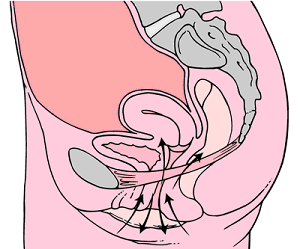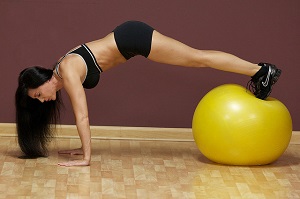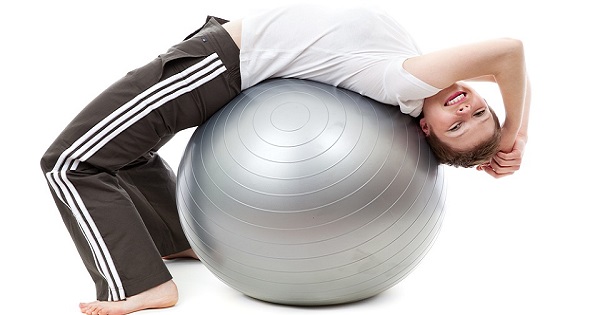You may have heard of Kegels as a way to boost your sex life. Doctors even recommend doing Kegel exercises to women who just gave birth. After all, it helps the uterus get back into its pre-pregnancy shape and eventually make that area down there a bit smaller.

Aside from helping you in bed, did you know that exercising your pelvic floor muscles offers tons of benefits, too? Gynecologist Dr. Arnold Kegel first introduced Kegel exercise in 1948. He collectively called the pelvic floor muscles, “Kegel muscles,” which support the uterus, small intestine, rectum and bladder. Dr. Kegel invented the exercise as a form of non-surgical treatment to relax the genital area.
So, what exactly can Kegel exercises do? And why do you have to incorporate this to your daily routine? Read on to find out about the magic of Kegels.
Understanding Kegel Exercises
The pelvic floor is a series of tissues and muscles located at the bottom of your pelvis, or the area between your hips that keeps your reproductive organs in place.
The pelvic floor forms a sling that holds the organs intact. When the pelvic floor is weak, then issues such as inability to control bladder or bowel occurs.
This is where Kegel exercises come in.
Kegel exercises are a type of clench-and-release exercise that helps your pelvic floor muscles grow stronger. Once you are able to strengthen your pelvic floor muscles, they will be able to support the bladder, uterus, rectum and the small intestine.
Both men and women can benefit from doing this form of exercise. However, if you experience any of the following, then you will need to work out your pelvic floor muscles to strengthen it.
- Urine leak every time you sneeze, cough, lift something heavy or laugh. This is called stress incontinence.
- A sudden urge to pee or leak stool. These are called urinary or fecal incontinence.
- You recently gave birth.
Why Do Kegel Exercises?
 Here’s the truth: women go through different stages in life – pregnancy, childbirth, aging, gaining weight, going through surgery – you name it.When you go through this process, your PC muscles are affected, causing them to weaken.
Here’s the truth: women go through different stages in life – pregnancy, childbirth, aging, gaining weight, going through surgery – you name it.When you go through this process, your PC muscles are affected, causing them to weaken.
Your pelvic organs may lower into your vagina, which can be uncomfortable. This condition can also cause urinary incontinence, which is also something you don’t want to go through.
So, why should you do them? The answer is simple – to strengthen the pelvic floor muscles. If you experienced any of the conditions mentioned, then doing this simple exercise can do the trick.
Let’s say you just gave birth to a beautiful baby girl. Pregnancy and childbirth can stretch and tend to weaken your pelvic floor muscles. It may not seem like a life and death situation, but this stretching can cause urine control problems.
 If you don’t do anything about it, the time will come when holding urine for a few seconds until you reach the bathroom might be a difficult thing to do. Worse yet, this can result in a uterine prolapse or a condition where the uterus sags. Kegel exercises can help prevent these types of conditions.
If you don’t do anything about it, the time will come when holding urine for a few seconds until you reach the bathroom might be a difficult thing to do. Worse yet, this can result in a uterine prolapse or a condition where the uterus sags. Kegel exercises can help prevent these types of conditions.
If you are experiencing stress incontinence, then working out your pelvic floor muscles can help a lot, too. Based on research, 70 percent of women who experienced urine leaks while laughing or running reported an improvement after regularly exercising their PC muscles. This is because doing Kegels can put their pelvic floor muscles back into shape, thereby minimizing, if not totally getting rid of leaks.
How To Do Kegel Exercises
 It may not seem a lot or will not save lives, but Kegel exercises surely deserves the spotlight. However, it’s not going to be as easy as it seems. At the same time, finding the right muscles to contract can be challenging for many people.
It may not seem a lot or will not save lives, but Kegel exercises surely deserves the spotlight. However, it’s not going to be as easy as it seems. At the same time, finding the right muscles to contract can be challenging for many people.
To help you with that, here are five steps on how to do Kegel exercises the right way and eventually improve your pelvic floor health.
Find Your Pelvic Floor Muscles
This is the first and most important step in doing Kegel exercises. However, this can be tricky and the most difficult to do, since targeting the wrong muscles can make this work out a failure – okay fine, but it will take longer to tone them.
 One way to find pelvic floor muscles is to insert your finger inside your vagina. Then try to tighten the muscles surrounding your vagina. The muscles you used are what you called pelvic floor muscles, which is exactly what you need to activate. Another way to do this is by stopping your urine in the middle of the flow. The muscles working in here are the PC muscles.
One way to find pelvic floor muscles is to insert your finger inside your vagina. Then try to tighten the muscles surrounding your vagina. The muscles you used are what you called pelvic floor muscles, which is exactly what you need to activate. Another way to do this is by stopping your urine in the middle of the flow. The muscles working in here are the PC muscles.
However, make sure to do the “stop the urine” technique for learning purposes only and to help you find the right muscles. Incomplete emptying of your bladder or doing Kegels as you urinate weakens your muscles and can increase your risk of urinary tract infection or UTI. Of course, you don’t want that.
If you need medical help, then biofeedback training can help you locate the PC muscles. Your doctor will insert a probe inside your vagina or adhesive electrodes in the vaginal area or in the anus to show whether you contracted the right muscles or not. Plus, this type of device can show you how long you were able to make and hold that contraction.
Perfect Your Technique
Now that you located your pelvic floor muscles, it’s now time to do the exercise and eventually perfect your technique.

Before you start, make sure that your bladder is empty, meaning you’ve released all the urine. Then lie down on your back or get into a comfortable position and tighten your pelvic floor muscles. Contract the muscles for five seconds then relax for another five. Try to do the contraction four to five times for five seconds. Gradually, contract your muscles for as long as 10 to 15 seconds, with 10 seconds rest in between contractions.
Once you are able to master the technique, you can add variations, such as pulling your legs up while exercising your pelvic floor muscles.
A piece of advice: make sure to maintain your focus as you tighten your pelvic floor muscles. Try your best not to flex the muscles in your thighs, abdomen and buttocks and focus only on the PC muscles. At the same time, breathe freely during contractions. Don’t hold your breath since it will only make contraction more difficult for you.
Consistency Is Key
 What’s the point of knowing and mastering these steps when you can’t even devote at least 10 minutes of your time for Kegels? If you want results, then make sure to do this and make it a part of your routine.
What’s the point of knowing and mastering these steps when you can’t even devote at least 10 minutes of your time for Kegels? If you want results, then make sure to do this and make it a part of your routine.
Three to four times a day is advisable, so don’t forget to do this after breakfast, lunch, dinner and even when you enjoy your midnight snack.
In other words, make it an effort to fit Kegels in your daily routine. The best thing about doing this type of exercise is that you can do this without anyone knowing. You can do it while watching TV or taking your 15-minute break at the comfort of your office or during commute on your way home. See, there is no excuse for not doing the Kegel exercises since you can do them anytime, anywhere.
Remember, Kegel exercise works best when done on a regular, consistent schedule.
Track Your Progress
 How will you know if there are changes when you don’t track any developments?When you do kegels, make sure to take note of any changes, if any, to find out if this type of exercise is helping you.
How will you know if there are changes when you don’t track any developments?When you do kegels, make sure to take note of any changes, if any, to find out if this type of exercise is helping you.
Take note of how many times you were able to exercise your muscles and the number of minutes spent squeezing those muscles.
Keep in mind that every woman is different. Some experience dramatic changes, while there are others who need a few weeks before they can see the results. To be safe, stick with this exercise for, say four to six weeks as recommended by the National Institutes of Health. However, you may have to do this work out for as long as four months. This is enough time to feel any improvements or changes in your body.
Don’t Hesitate To Ask For Help
 Asking help doesn’t make you weak or stupid. It only means you are strong enough to accept the fact that you can’t do everything on your own.
Asking help doesn’t make you weak or stupid. It only means you are strong enough to accept the fact that you can’t do everything on your own.
If you don’t see any improvement, then maybe you are doing it the wrong way.
In this case, ask help if you feel you are not doing Kegels properly. Your doctor can help you in identifying and isolating muscle groups that you will and will not need in order to perform the exercise correctly. Also, your doctor might have equipment or monitoring device, such as the biofeedback training that can help identify the pelvic floor muscles you need to work out. This can also check whether you are doing the exercise properly or not.
So, Are You Ready To Do Kegel Exercises The Right Way?
